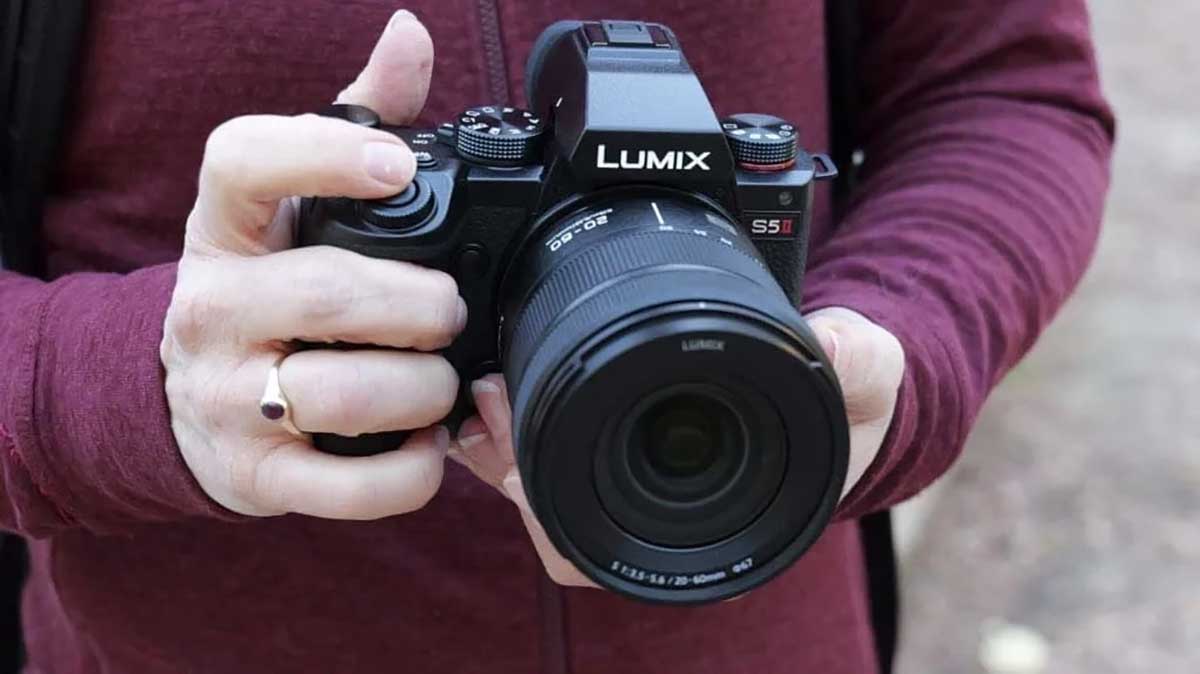While the dimensions show that the Panasonic S5II has gained a few millimetres in comparison with the original S5, it still feels significantly smaller than than the Panasonic Lumix S1 and Lumix S1R. In comparison with the S5, there are also no changes to the control layout which blends the arrangement seen on the Panasonic Lumix S1R and S1 with those of the GH5 II and means you get direct control over the most important parameters.
The exposure mode is set using a dial on the right of the top plate while a second dial on the left is used to set the drive mode. Front and rear control dials enable the exposure to be adjusted quickly while a mini-joystick is available for selecting the AF point. In a welcome upgrade, this joystick works in 8 directions rather than just 4, making it quicker and easier to move the active AF point diagonally.
Like its predecessor and the S1 cameras, the S5II has a switch on the right of the viewfinder to set the focusing mode. It enables you to switch quickly from single to continuous AF or manual focus mode and back without accessing the menu. This switch surrounds a button that provides a fast route to the AF point selection options – including Animal detection and Human Eye detection.
Screen and Viewfinder
Panasonic has stuck with the same 3-inch 1,840,000-dot vari-angle touchscreen for the S5II as it uses on the S5. This can be flipped around to face forwards, which is perfect for vlogging, but it can also be rotated and tilted to be helpful when shooting high- or low-angle images in portrait or landscape orientation.
I’ve been able to shoot with a pre-production sample of the S5II and I found the screen gives a clear view that matches the captured image well. I was in Valencia in Spain, so the conditions were brighter than we usually get at this time of year in the UK, but it was overcast. I’ll have to wait until I get a full-production sample to test the screen in very bright conditions.
While the S5 has a 2,360,000-dot OLED electronic viewfinder, the S5II has a 3.68-million-dot OLED with the same refresh rate of 60 or 120fps. There are viewfinders with higher resolutions, the Panasonic S1R and S1 for example have a 5,760,00-dot viewfinder, but the S5II’s viewfinder proved perfectly acceptable during my testing. I’ve found the S1 and S1R’s viewfinder’s get a bit laggy in low light and I didn’t notice that in the S5II’s, but I’ll be checking further when a full production sample comes in for testing.




